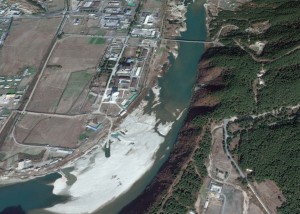
Top Chinese nuclear experts have expanded their estimate of North Korea’s nuclear capability beyond previous U.S. estimates, making Pyongyang’s arsenal a potential regional security threat, The Wall Street Journal reported Wednesday.
The paper quoted a respected U.S. nuclear expert on North Korea who warns, if true, it will complicate efforts to denuclearize the Korean peninsula.
The Journal said the Chinese estimate that the North may already possess 20 nuclear warheads was relayed in a closed-door meeting with U.S. nuclear specialists at the China Institute of International Studies in February.
Recently, U.S. experts suggested North Korea had between 10 and 16 nuclear bombs.
One of those U.S. experts, Stanford University’s Siegfried Hecker, a former head of the Los Alamos National Laboratory, is quoted as saying the more Pyongyang believes it has a fully functional nuclear arsenal and deterrent, the more difficult it will be to walk them back from that.
Weapons-grade plutonium
The Chinese nuclear experts also said the North has the capability of producing enough weapons-grade uranium to double its arsenal by next year.
Hecker, who first revealed Pyongyang’s uranium enrichment program during a 2010 visit there, said Chinese experts now believe Pyongyang has a greater domestic capacity to enrich uranium than previously thought.
Security analyst James Kim, of the Seoul-based Asian Institute for Policy Studies, is uncertain why China allowed its experts to inform their American counterparts.
“China’s policy vis-à-vis (in relation to) North Korea has been changing for some time now. President Xi Jinping has yet to invite the North Korean head of state (Kim Jong-Un) for a summit meeting. Relations between China and North Korea have been cool for some time now,” Kim said.
“But, the recent revelation has been somewhat of a surprise because it provides a rationale for the American allies now to bulk up their defenses vis-à-vis North Korea, and that’s now good news from China’s point of view,” he said.
Two problems
Kim said the North still confronts two problems. One is re-entry into earth’s atmosphere of a long-range intercontinental ballistic missile from space as well as a precise guidance system to hit a target. The other is the miniaturization of the warhead.
Sidney Seiler, the U.S. envoy to the moribund six-party talks on North Korea’s nuclear program, said Tuesday the six-party talks with Iran on its nuclear program clearly demonstrates a U.S. willingness to negotiate a resolution of the nuclear standoff with North Korea.
Seiler said the U.S. engagement with Iran, Myanmar, also known as Burma, and Cuba underscores the flexibility and creativity the United States can show when it has a credible dialogue partner who decides to change course for the sake of its own national interest.
Troy Stangarone of the Washington-based Korea Economic Institute said if the Journal report is true, it underscores the growing difficulty of reaching any kind of denuclearization agreement with North Korea.
“It raises questions of what North Korea would do to take and give up its nuclear arsenal (and) how likely it is to do so. North Korea clearly seems to be pushing ahead and that already makes the problem more difficult,” Stangarone said.
North Korea capabilities
Earlier this month, Admiral William Gortney, head of U.S. Northern Command, warned that Pyongyang is now capable of launching a nuclear armed missile on a KN-08 ballistic missile that can reach the United States. However, he said he has no indication it has been tested.
Regarding testing, Stangarone said, “What we do know is that it has successfully tested both the Taepodong-1 and Nodong weapons, which are both capable of hitting South Korea and Japan. It’s believed they’ve likely taken and miniaturized a warhead to be able to place on top of one of those weapons.
“So, that places both Seoul and Japan in potential target range for North Korea. And, in order to counter that, it would require a more robust missile defense system,” he added.
Stangarone said he hopes China’s information is a sign that, as North Korea’s largest trading partner, investor and aid donor, Beijing will induce North Korea to return to the six-party nuclear talks, which it walked away from in 2009.
Meanwhile, the Journal reports that an increase in North Korea’s nuclear arsenal feeds international concern over proliferation from a country U.S. officials have said has exported nuclear technology to Syria and missile components to Iran, Yemen and Egypt.
